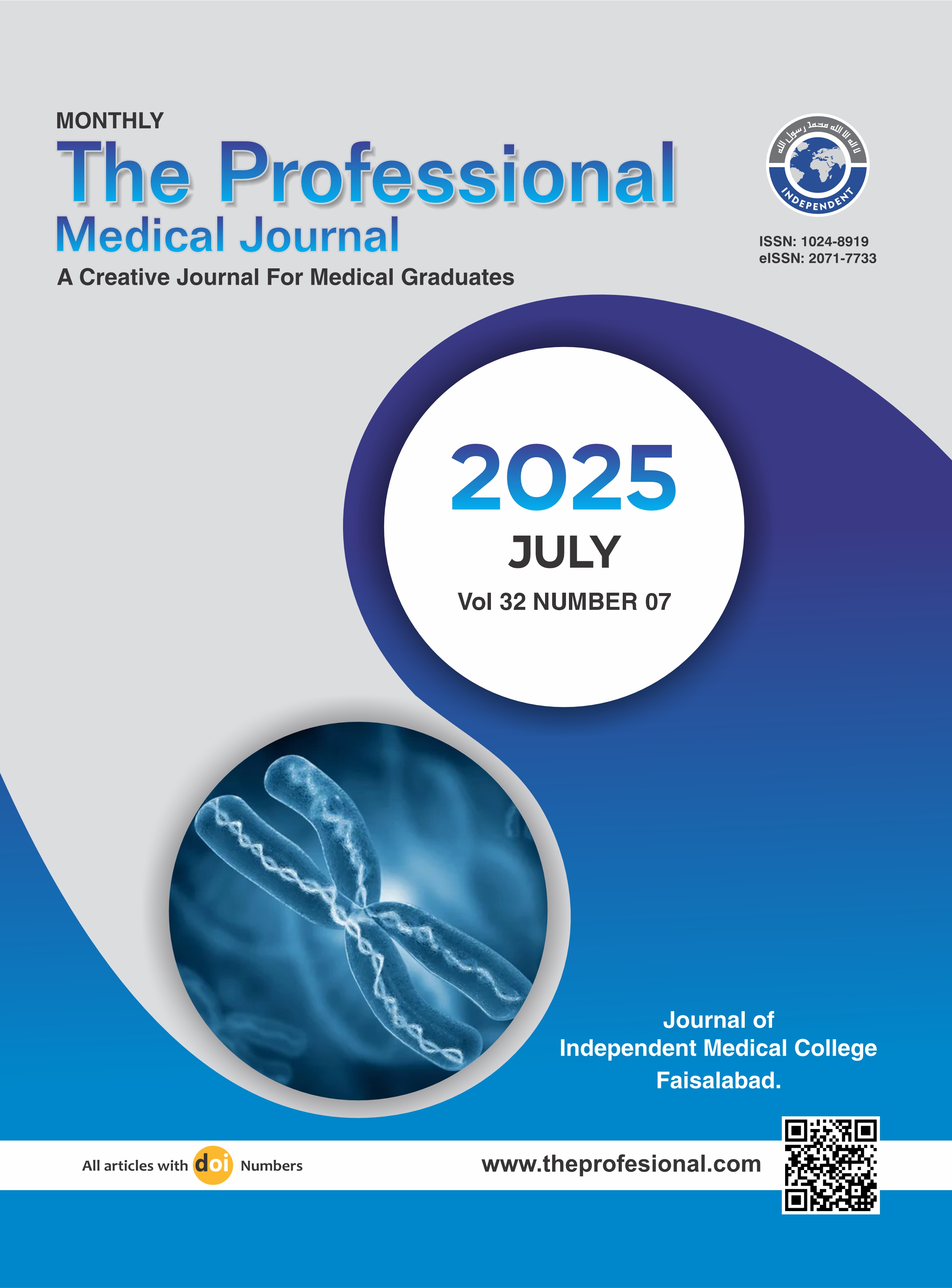Diagnostic accuracy of Itransfontanelle sonography as compared to computed tomography of brain in the detection of hydrocephalus.
DOI:
https://doi.org/10.29309/TPMJ/2025.32.07.9595Keywords:
Computer Tomography Scan, Diagnosis, Diagnostic Radiology, Hydrocephalous, Trans Frontal UltrasoundAbstract
Objective: To determine diagnostic accuracy of trans fontanelle ultrasound for detection and diagnosis of hydrocephalus in terms of sensitivity, specificity, Positive predictive value and Negative predictive value by keeping CT brain as gold standard. Study Design: Cross-sectional study. Setting: Department of Diagnostic Radiology, MTI/Hayatabad Medical Complex, Peshawar. Period: August 01, 2024 to January 1, 2025. Methods: The study included 34 patients (aged 1 day to 6 months) with increased head circumference, using non-probability consecutive sampling. Trans fontanelle ultrasound was performed to diagnose hydrocephalus, with CT scans serving as the reference standard. Data were analyzed using SPSS software, and sensitivity, specificity, and predictive values were calculated. Results: The study included 33 patients (72.72% boys, 27.27% girls) with a mean age of 29.45 ± 7.31 days. Trans-frontal ultrasound was used to measure the lateral ventricle diameter and compared with CT scan findings. The ultrasound demonstrated a sensitivity of 66.70%, specificity of 88.90%, a positive predictive value of 83.30%, and a negative predictive value of 76.20%. Conclusion: The study highlights trans-fontanelle sonography to be a useful, non-invasive diagnostic tool for diagnosis of hydrocephalus in infants, especially when compared to the standard CT scan.
Downloads
Published
Issue
Section
License
Copyright (c) 2025 The Professional Medical Journal

This work is licensed under a Creative Commons Attribution-NonCommercial 4.0 International License.


